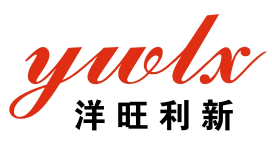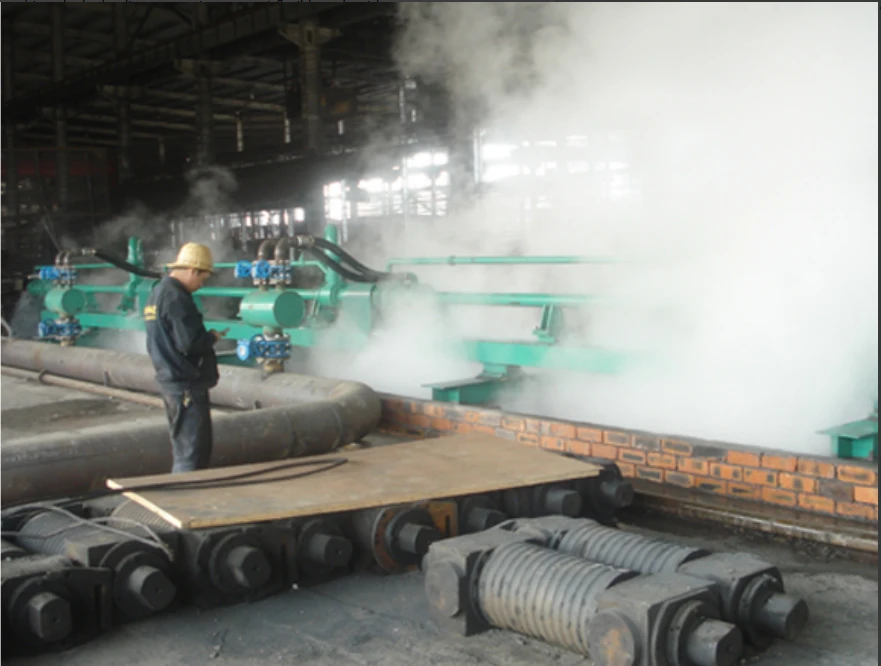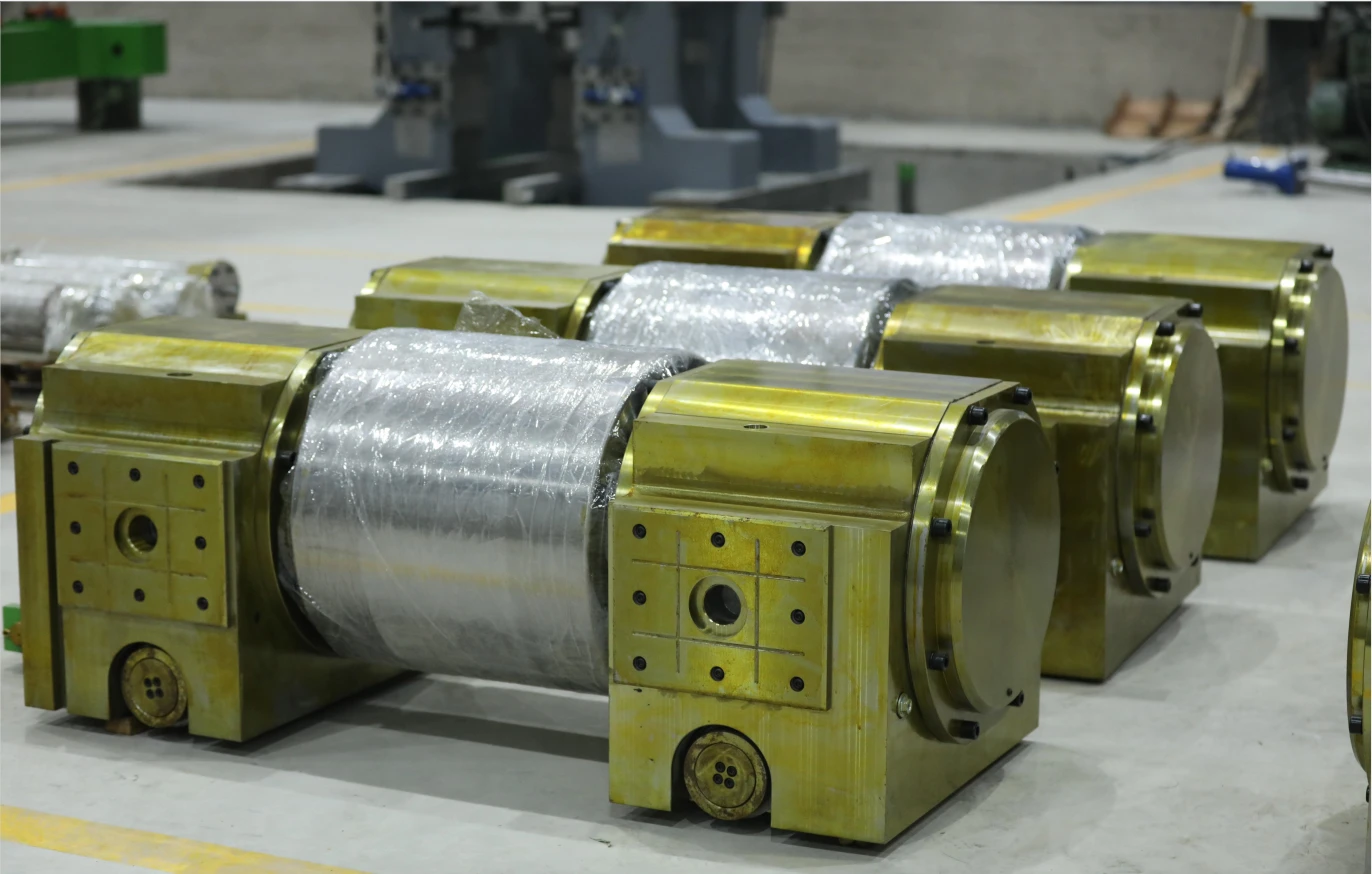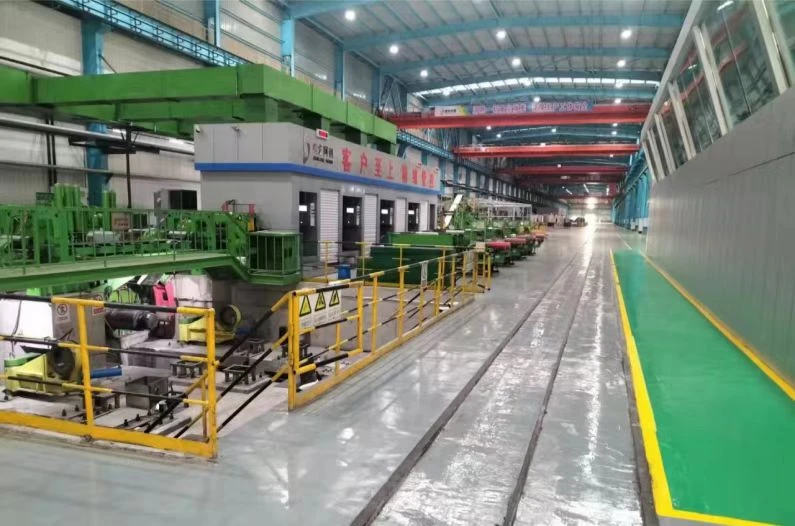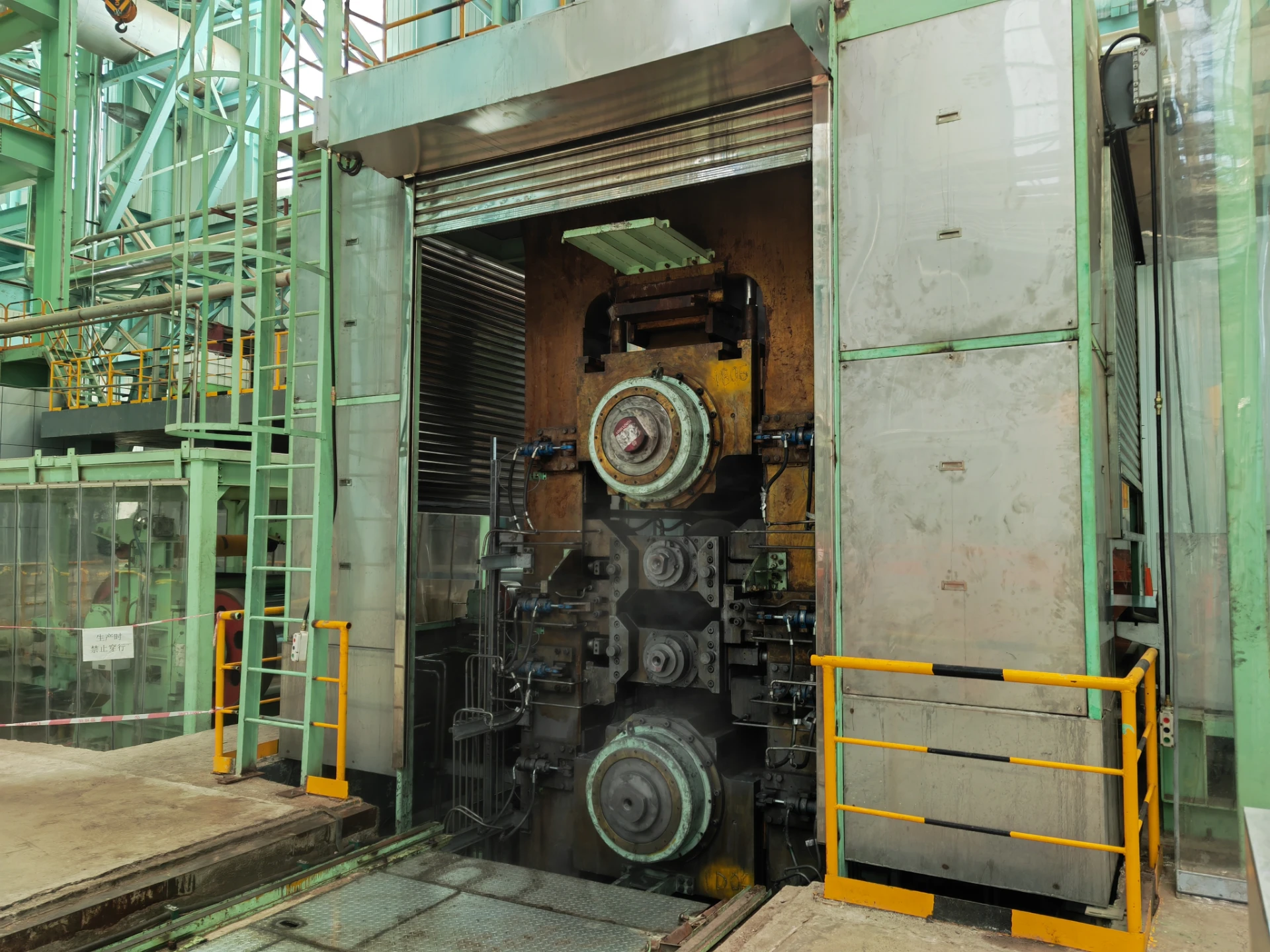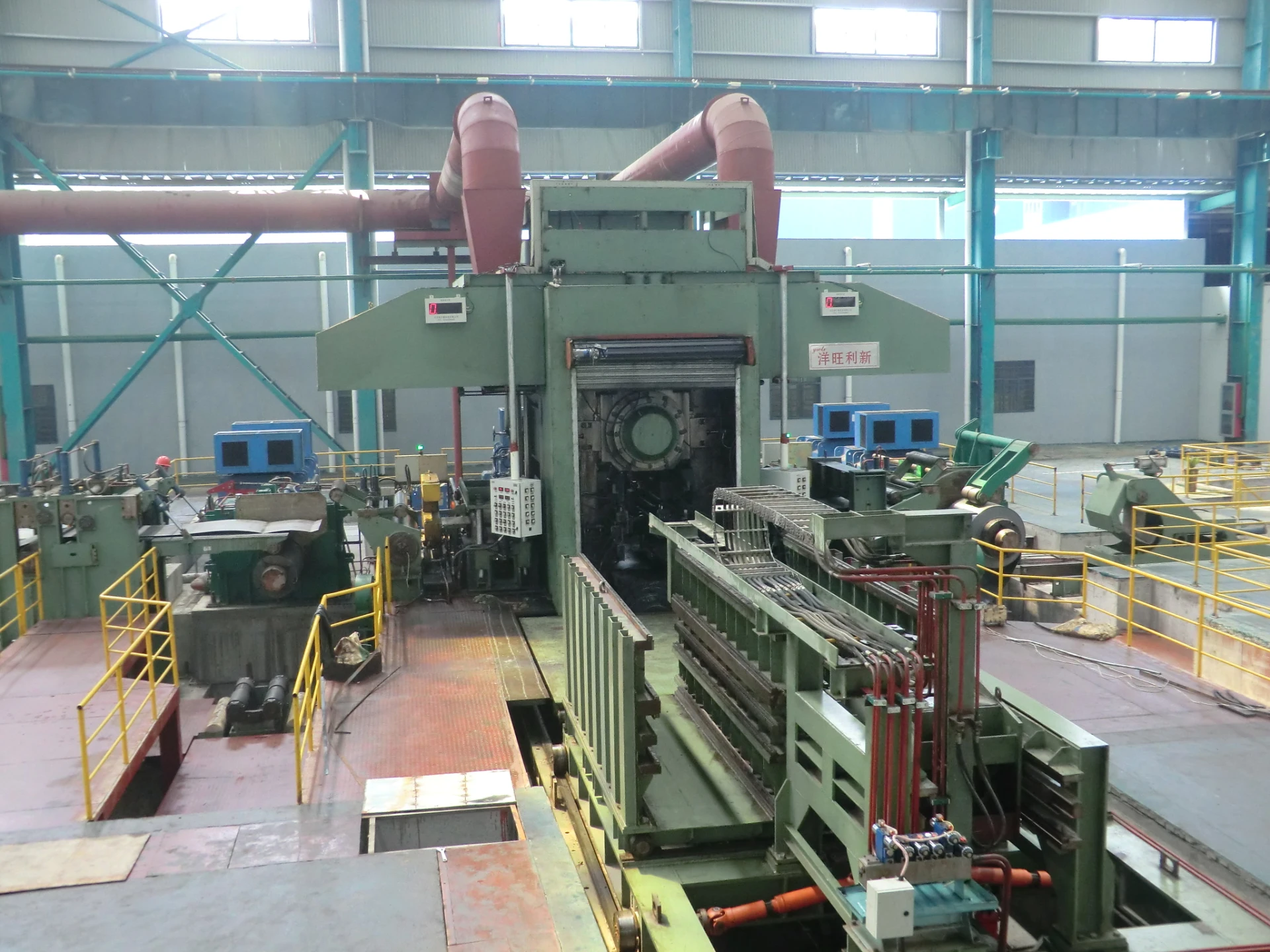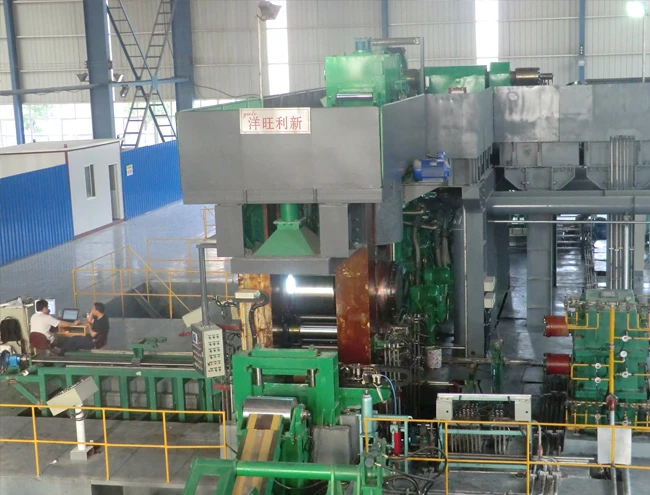
High-Performance Reversing Rolling Mills | 4Hi & 6Hi Cold Mills
The Strategic Advantage of Advanced Reversing Rolling Mill Technology in Modern Metallurgy
In the relentless pursuit of precision, efficiency, and material superiority, the reversing rolling mill stands as a cornerstone technology in the metallurgical industry. Unlike traditional single-pass mills, a reversing rolling mill significantly enhances cold rolling capabilities by allowing material to pass back and forth multiple times between a single set of work rolls, thereby achieving precise thickness reduction and improved mechanical properties. This continuous deformation process minimizes material waste and optimizes energy consumption, critical factors in today's environmentally conscious and cost-competitive market. The core innovation lies in its ability to reverse the direction of the rolling stock, facilitating incremental reductions without the need for multiple mill stands. This not only reduces the overall footprint of the machinery but also provides unparalleled control over the finished product's gauge, flatness, and surface quality. For industries demanding high-performance materials—from automotive and aerospace to electronics and packaging—the operational flexibility and superior output quality of these mills are indispensable. The market trend clearly indicates a growing demand for mills capable of processing advanced high-strength steels (AHSS) and non-ferrous alloys with increasingly stringent tolerance requirements.
Our Four/Six-Hi Reversing Cold Rolling Mill exemplifies this technological advancement, offering a robust solution for diverse cold rolling applications. The "Hi" designation refers to the number of rolls in the mill stand, directly influencing rolling stability, reduction capability, and strip flatness. A 4-hi configuration typically includes two work rolls and two backup rolls, providing adequate support for moderate reduction and good flatness control. In contrast, a 6-hi reversing cold rolling mill incorporates two additional intermediate rolls, further improving the stability of the work rolls and significantly enhancing control over strip flatness and edge drop, particularly crucial when rolling thinner gauges or harder materials. This hierarchical approach to roll stand design allows for optimized pressure distribution, minimizing roll deflection and ensuring uniform thickness across the entire strip width. The meticulous engineering behind these systems ensures long-term reliability and consistent performance, catering to the exacting demands of modern metal processing facilities globally. Our commitment to incorporating cutting-edge design principles and materials ensures that our reversing mills not only meet but exceed contemporary industry benchmarks for cold rolling precision and efficiency.
Unveiling the Manufacturing Process and Technological Superiority
The manufacturing of a high-performance reversing rolling mill is a testament to precision engineering, involving a meticulous sequence of processes that ensure the durability, accuracy, and operational excellence of each component. The journey begins with the selection of premium-grade materials, primarily high-strength alloy steels for critical components such as mill stands, roll chocks, and backup rolls. For work rolls, specialized high-chromium tool steels or carbide compositions are often utilized, chosen for their superior hardness, wear resistance, and thermal stability under extreme rolling pressures. Manufacturing processes like large-scale casting are employed for the robust mill housing, providing the structural integrity to withstand immense rolling forces. This is followed by intricate forging for components requiring exceptional toughness and fatigue resistance, such as shafts and gears. Subsequently, advanced CNC machining plays a pivotal role, ensuring unparalleled dimensional accuracy and surface finish for all intricate parts, from the roll barrels to the hydraulic cylinders and electrical cabinets. Every component undergoes rigorous non-destructive testing, including ultrasonic, magnetic particle, and dye penetrant inspections, to detect any internal flaws, ensuring material integrity before assembly.
Our commitment to quality extends to adherence to stringent international inspection standards, including ISO 9001 for quality management systems and ANSI standards for mechanical components and design specifications. Each component's fit and finish are meticulously checked, and critical clearances are verified to micro-meter precision. The assembly process is orchestrated by highly skilled technicians, followed by comprehensive factory acceptance testing (FAT), where the entire mill system is operated under simulated conditions to validate performance parameters such as rolling speed, gauge accuracy, flatness control, and power consumption. The projected service life of our reversing rolling mill systems typically exceeds 30 years with proper maintenance, a testament to their robust design and quality of manufacturing. These mills find critical application across various heavy industries: in metallurgy, for producing high-precision steel, aluminum, and copper strips; in petrochemical applications, for specialized alloy foils; and even in water supply and drainage sectors for the production of corrosion-resistant pipes and sheets. Their inherent advantages in typical scenarios include significant energy efficiency due to reduced passes and optimized lubrication systems, and superior anti-corrosion properties of the finished product, achieved through precise rolling conditions that minimize surface defects and enhance material homogeneity.
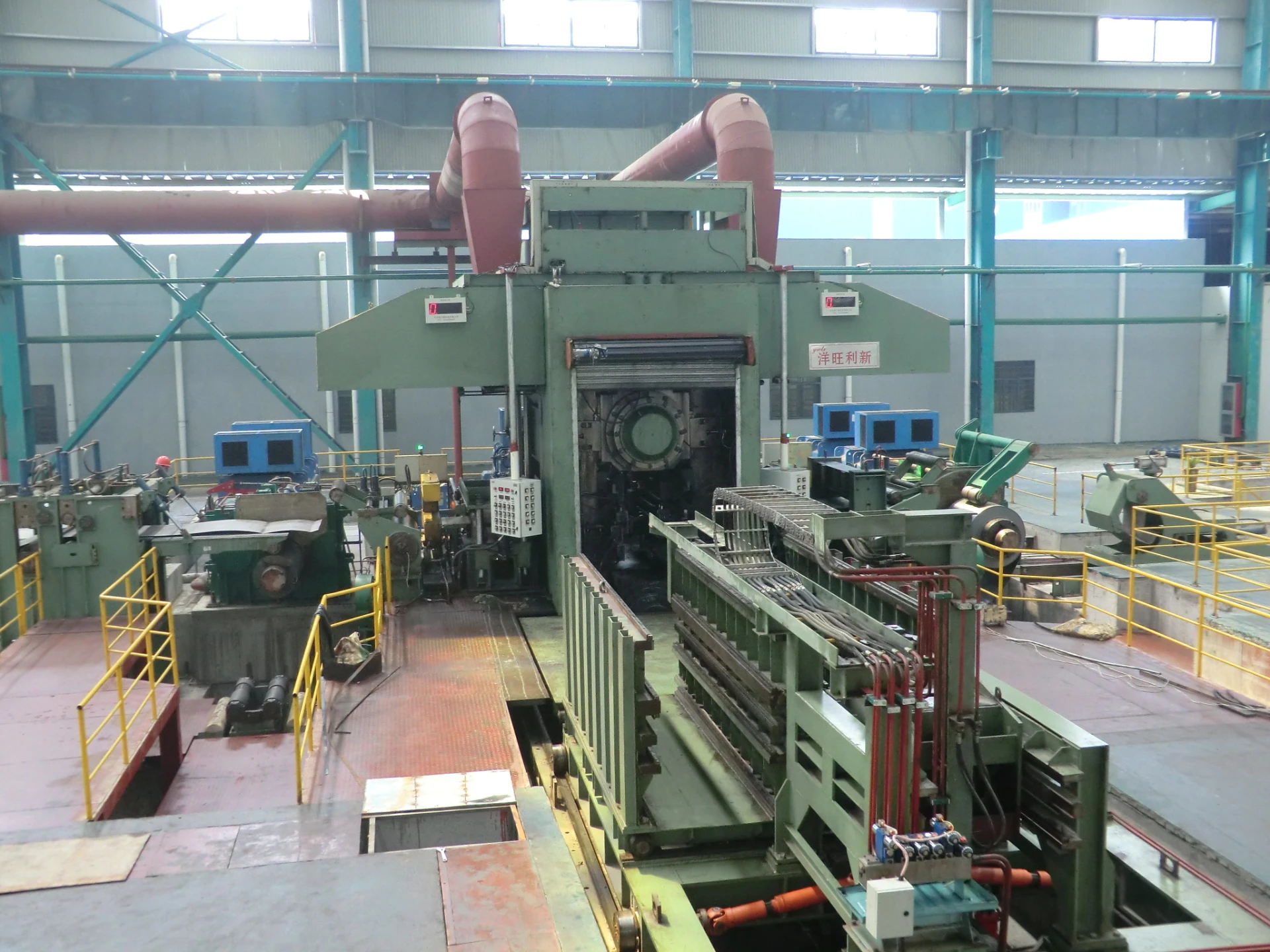
Technical Specifications and Performance Metrics
Understanding the intricate technical parameters of a reversing rolling mill is crucial for appreciating its capabilities and suitability for specific production needs. Key metrics include the maximum rolling force, which dictates the toughest materials and largest reductions the mill can handle, and the rolling speed, which directly impacts throughput. Furthermore, the maximum and minimum strip widths and thicknesses define the operational envelope of the mill. Our Four/Six-Hi Reversing Cold Rolling Mills are engineered to deliver superior performance across a broad spectrum of materials, including stainless steel, carbon steel, silicon steel, copper alloys, and aluminum. The mill's gauge control system, often featuring hydraulic automatic gauge control (AGC) and advanced flatness control systems (AFC), ensures that the finished strip meets the most stringent thickness tolerances, typically ±1-2 microns, even at high rolling speeds. These systems employ sophisticated feedback loops, utilizing X-ray or isotope thickness gauges to provide real-time data for immediate roll gap adjustments. The roll force is typically distributed across multiple work rolls and backup rolls to minimize deflection, a phenomenon known as roll flattening, which can lead to strip crown issues.
To further illustrate the robust capabilities of our mills, consider the following representative technical parameters for a high-performance reversing rolling mill, based on typical industry requirements and our product offerings. These specifications underscore the engineering precision and operational flexibility inherent in our designs, enabling seamless integration into complex production lines and supporting the manufacturing of high-quality finished products with exceptional consistency. Our design philosophy emphasizes modularity, allowing for future upgrades or modifications to meet evolving production demands. The hydraulic systems are designed for high responsiveness, ensuring rapid and precise adjustments during the rolling process. Furthermore, the integration of advanced automation and process control systems, often leveraging SCADA (Supervisory Control and Data Acquisition) and PLC (Programmable Logic Controller) technologies, provides operators with comprehensive real-time monitoring and diagnostic capabilities, optimizing efficiency and minimizing downtime.
Typical Reversing Rolling Mill Parameters
Application Scenarios, Industry Impact, and Advantages
The versatility and precision of a modern reversing rolling mill make it an indispensable asset across a multitude of high-demand industrial sectors. In the automotive industry, these mills are crucial for producing lightweight, high-strength steel sheets for car bodies, significantly contributing to fuel efficiency and safety. The ability to precisely control gauge and mechanical properties is paramount for achieving the required formability and crashworthiness. For the aerospace sector, where material integrity is non-negotiable, reversing mills produce thin gauges of specialized aluminum, titanium, and nickel alloys used in aircraft skins, structural components, and engine parts, where even a slight deviation in thickness can compromise performance. The electronics industry relies on these mills for ultra-thin copper and aluminum foils essential for circuit boards, batteries, and capacitors, requiring exceptional flatness and surface finish to prevent short circuits and ensure optimal conductivity. Furthermore, in the packaging industry, they are used to create thin, uniform aluminum and steel foils for food and beverage container111s, where material consistency directly impacts product preservation and consumer safety.
The technical advantages offered by our reversing rolling mill designs are multifaceted, directly translating into tangible benefits for our clients. Firstly, their energy efficiency is significantly superior compared to multi-stand tandem mills for smaller production volumes, as they require fewer motor drives and less complex handling systems. Advanced lubrication and cooling systems minimize friction and thermal expansion, further reducing energy consumption and prolonging roll life. Secondly, their unparalleled precision in gauge control (enabled by sophisticated AGC and AFC systems) ensures consistent product quality, reducing scrap rates and enhancing material yield. This precision is critical for industries with zero-defect policies. Thirdly, the ability to achieve significant reductions in multiple passes within a single mill stand offers operational flexibility, allowing for quick changeovers between different materials and product specifications, optimizing production schedules. Moreover, the enhanced surface quality and mechanical properties—such as increased tensile strength and improved elongation—achieved through controlled cold working processes, elevate the value of the finished products, making them suitable for the most demanding applications. Our mills are designed to minimize vibration and noise, contributing to a safer and more comfortable working environment, while their robust construction guarantees high uptime and reduced maintenance requirements.
Comparative Analysis and Tailored Solutions
When evaluating a reversing rolling mill, discerning clients often consider a range of factors beyond basic specifications, including a manufacturer's reputation, technological innovation, and after-sales support. While several reputable manufacturers exist globally, our unique proposition lies in our deep understanding of client-specific needs and our agile approach to customization. Unlike some larger conglomerates that offer standardized, off-the-shelf solutions, we excel in providing highly specialized 4-Hi reversible cold rolling mill and 6-Hi reversing cold rolling mill systems. This specialization allows us to optimize every aspect of the mill—from roll diameters and winding tension to control algorithms and automation levels—to precisely match the client's material types, desired output specifications, and production volume. Our competitive edge stems from a blend of cutting-edge research and development, robust engineering, and a client-centric service model. We differentiate ourselves by offering superior flatness control mechanisms, integrating advanced real-time process monitoring, and providing comprehensive training and technical support that extends throughout the mill's lifecycle.
Our approach to custom solutions begins with an in-depth consultation, analyzing the client's current and future production requirements. This includes evaluating the mechanical properties of input materials, target thickness and width tolerances, surface finish requirements, and available factory footprint. Based on this comprehensive assessment, we propose a tailored mill configuration, which might involve a specific combination of work roll materials, backup roll configurations, or the integration of specialized strip cleaning and drying systems. For instance, a client requiring ultra-thin gauge stainless steel with exceptional flatness might benefit significantly from a 6-Hi mill with advanced roll bending and shifting capabilities, whereas a client focusing on high-volume aluminum sheet production might find a specialized 4-Hi mill more cost-effective and efficient. Our engineers leverage finite element analysis (FEA) and computational fluid dynamics (CFD) to simulate rolling conditions, ensuring optimal design and performance before manufacturing commences. This proactive design philosophy, coupled with our proven track record, establishes us as a trusted partner for advanced cold rolling solutions.
Reversing Cold Rolling Mill Configuration Comparison
Building Trust: Client Success Stories, Certifications, and Support
Establishing trust is paramount in the B2B sector, especially for high-value capital equipment like a reversing rolling mill. Our authority in this field is underpinned by decades of specialized experience and a steadfast commitment to quality, evidenced by our ISO 9001 certification, which guarantees robust quality management systems throughout design, manufacturing, and after-sales service. We have proudly served the metallurgical industry for over 20 years, during which we have forged strong partnerships with leading steel producers, non-ferrous metal manufacturers, and specialized alloy suppliers globally. Our commitment to excellence is reflected in our robust testing protocols, including comprehensive Factory Acceptance Tests (FAT) and Site Acceptance Tests (SAT), often witnessed and approved by third-party inspection bodies, ensuring that every mill meets or exceeds contractual performance guarantees. We consistently invest in R&D, collaborating with academic institutions and industry research centers to push the boundaries of cold rolling technology, ensuring our solutions remain at the forefront of innovation. This relentless pursuit of technological advancement and adherence to the highest international standards, including CE marking for European market compliance and ASME standards where applicable for pressure vessels or structural integrity, provides our clients with unwavering confidence in our equipment.
Our dedication to client success is best illustrated through our application cases and testimonials. For instance, a major stainless steel producer in Southeast Asia recently implemented our custom-designed 6-Hi reversing cold rolling mill to achieve ultra-thin gauges (0.1 mm) for high-end kitchenware and architectural applications. The client reported a significant reduction in material waste by 15% and a 20% increase in production throughput within the first six months of operation, directly attributable to the mill's superior gauge control and operational stability. Another notable case involves a specialized copper foil manufacturer that deployed our 4-Hi reversible cold rolling mill for producing precision copper strip for lithium-ion battery electrodes, where our mill's capability to deliver consistent flatness and surface finish at high speeds was critical. This led to an improved battery performance and a more efficient production line for our client. Our warranty commitment typically covers 12 to 24 months post-commissioning, with options for extended service agreements. Our customer support infrastructure is global, offering 24/7 remote diagnostics, on-site technical assistance, and a readily available supply of genuine spare parts, minimizing potential downtime and maximizing operational efficiency for our clients. The typical delivery cycle for a custom-built mill ranges from 12 to 18 months, depending on complexity, with clear milestones and progress reporting throughout the project lifecycle.
Frequently Asked Questions (FAQ)
A1: Reversing mills offer superior gauge control and flatness for smaller batch sizes or specialized materials, consume less energy for certain production volumes, and require a smaller footprint. They are highly flexible for changing product specifications.
A2: We integrate advanced hydraulic Automatic Gauge Control (AGC) systems, coupled with X-ray or isotope thickness gauges for real-time feedback. For critical applications, our 6-Hi mills feature advanced Automatic Flatness Control (AFC) systems and roll bending/shifting mechanisms to maintain micron-level precision.
A3: Our comprehensive after-sales support includes remote diagnostics, on-site technical assistance, preventative maintenance programs, spare parts supply, and operator training. We aim for rapid response times to minimize any potential operational disruptions.
Authoritative References
- Roberts, W. L. (1983). Cold Rolling of Steel. Marcel Dekker, Inc.
- Krauss, G. (2005). Steels: Processing, Structure, and Performance. ASM International.
- The Iron & Steel Society. (Various Issues). Iron & Steelmaker. (Journal focusing on advancements in steel production).
- ASM Handbook, Volume 14A: Metalworking: Bulk Forming. (2005). ASM International.
- Lenard, J. G. (2007). Compression: Rolling. In Fundamentals of Metal Forming. Springer.
-
YWLX’s 1450mm Six-Hi Reversing Mill Goes Live in BangladeshNewsNov.24,2025
-
Adjusting Roll Gap in 6Hi Reversing Cold Rolling Mill for Thin StripNewsNov.13,2025
-
Quality Control Standards for Automatic Gauge Control in Strip RollingNewsNov.13,2025
-
Effect of Skin Pass Rolling on Metal DuctilityNewsNov.13,2025
-
Key Components of a Modern TempermillNewsNov.13,2025
-
Common Wear Patterns of Work Roll in Tandem Cold Mill OperationsNewsNov.13,2025
-
Revolutionary Skin Pass Rolling Technology for Enhanced Steel QualityNewsNov.04,2025


